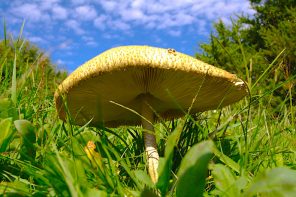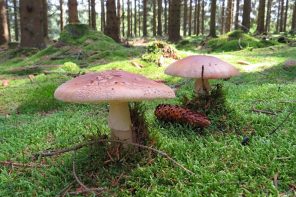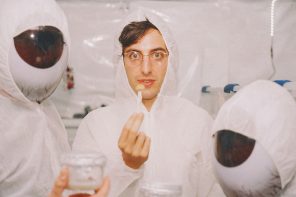At this point, it seems safe to say that psychedelics are making a remarkable and respectable comeback. Although they’re unlikely to fully shed their association with counterculture anytime soon, numerous research programs are currently underway exploring the curative, therapeutic, and spiritual benefits of these curious substances. It’s still not entirely clear exactly how psychedelics work on us, but a growing body of literature suggests what looks like their almost miraculous potential to, among other things, ease the symptoms of severe depression, erase the more devastating effects of PTSD, and help those in the last stages of life accept their deaths with dignity and, to use a more religious term, grace.
Accompanying the therapeutic benefits of psychedelics has always been fascination with their spiritual potential. Indeed, it’s pretty much a commonplace among many researchers that the intentional use of psychedelics in certain environments (what users and researchers refer to as “set and setting”) can mimic and perhaps even produce authentic mystical experiences. Indeed, many who take psychedelics do so mainly for what they consider to be the spiritual benefit of the experiences they offer. Using psychedelics isn’t so much recreational, in this sense, but a controlled spiritual practice.
We’re probably all familiar with the standard psychedelics used for such purposes—LSD, psilocybin (“magic mushrooms”), mescaline (peyote), and now the ever-popular ayahuasca. But there are literally hundreds of lesser-known naturally occurring and synthetic psychedelics that make similar promises, albeit with varying degrees of success. Case in point, DMT—or 5-methoxy-N,N-dimethyltryptamine (5-MeO-DMT). Found in several plants and, perhaps most famously, in the venom of the Colorado River toad, a recent study in the Journal of Psychopharmacology found that the majority of people who use the substance do so for the expressed purpose of spiritual exploration. Although the article suggests the therapeutic potential of DMT, it seems that the spiritual potential for “the spirit molecule,” is its main draw.
This represents something of a reversal of current trends, at least when it comes to reassuring the public that psychedelics were never the monster they were made out to be. Sure, studies into the potential value of psychedelics often focus on the spiritual components of the experiences, but the actual marketing involved focuses largely on the measurable and the medicinal. Otherwise put, in order to “sell” psychedelics to the public, especially the legislative and legal establishments, it must not only be put on par with other drug therapies but also shown to be even more effective. The approach, in other words, is thoroughly pragmatic, and understandably so: remember that legal, recreational marijuana was first medical marijuana.
All of which raises an interesting question, as we think about the future of psychedelics (though the question has a broader reach): why do we constantly feel the need to justify our experiences, drug-induced or otherwise, by first appealing to what can be measured? Perhaps the resurgence of interest in psychedelics may also remind us that such experiences are their own justification, though it seems that we’re still a long way off from recognizing that.




